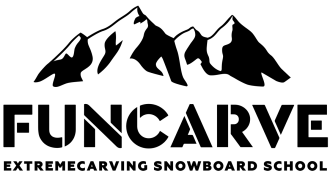Extremecarving. Laid-down turns. Details
Laid-down turn is a complicated trick that lasts few seconds but has a lot of details which influence the success. We will try to summarize the most important features in this article.
Laid-down turns in extremecarving are the goal of most snowboarders who are seriously keen on carving. And on one hand it is great because the overall level of snowboarding in Russia will become only higher because of this. A lot of videos and photos with these elements appeared in the last couple of years. On the other hand technique and beauty of extremecarving as a style suffers from such approach when people are interested only in laid-down turns. And we want to warn all the beginners – do not chase the closeness of snow! Look at those who learnt to fall on the slope and who roll over from one laid-down turn to another like roly-poly. Look at those who can't get up from the snow because they don’t know how to do it.
To examine in details everything that happens during these seconds which we spend in laid-down turn we need to remember all the phases of the turn. Besides one more phase is added when we talk about laid down turns, it is the phase of rise initiation.
Phases of laid-down turns
These phases are marked with colors on the picture at the right and their right timing in the turn affects the quality of riding significantly.
It is also necessary to note that rotation of shoulders in the laid-down turn has a little smaller amplitude in backside and a little bigger one at frontside which is due to the anatomy of the body. You can also see that speed is depicted on the picture, in green zone it is maximum and the rise is the easiest in this phase. Rise in red zone will be harder but it doesn’t mean that it is impossible.
Entering laid-down turn
In the very beginning of the carve, in the yellow zone, you need to make a deep inclination and put immediately your forearm to the slope, remember to keep your back as straight as you can and your knees bent.
- It is safer to put your whole forearm than only wrist because if you go across some roughness of the slope with your wrist you can be injured;
- When you put your forearm to the slope your shoulders are inclined to maximum and by doing this you set the right direction for vertical motion – parallel to the slope (you make this motion ‘horizontal’);
- This makes your inclination optimal in timing, without delay.
Sliding on the snow
In the process of the turn in green zone you need to straighten your legs, body and hands parallel to the slope.
- You should be attentive: don’t shift your weight to your arms, this will immediately remove the weight from your board and you will lose control and speed. Imagine that your arms caress the slope, they touch it gently in the beginning of the laid-down turn and you remove your arms gently from the slope in the end of the turn.
- Try to make a laid-down turn on backside with only one hand; it will help you to keep your body in right position and not to lose speed.
- When making a laid-down turn critical angles of edging appear inevitably and you should keep them under control within the acceptable range of angles. To do this on frontside you need to lift slightly your pelvis from the slope and on backside you should find optimal angle of unbent knees up to which you can do your vertical motion.
- You should chose precisely the right moment for starting the rise initiation – it is the moment when the speed is still quite high and your board isn’t perpendicular to the slope yet.
Rise initiation
In the moment of initiation of the turn, at the interfaces between green and red zone, you should simultaneously:
- …pull your body from the slope using the force of your torso muscles. On frontside your should pull your shoulders like in a ‘hyperextensions’ at gym and on back side you should take your hips first from the slope;
- …you should move your centre of mass a bit to your back foot;
- … keep your shoulders position along the board;
- … bend your knees sharply as if you are pulling them to your chest;
- … minimize the support you have in your arms;
- … turn your head towards the next turn.
Rise from the laid-down turn
When rising from the turn, in the red zone, you need to continue to make rotation of the body and only after it is completed you should enter the next turn. It means that you ride on frontside until you have ‘minus’ position and you look over your shoulder in the direction of your movement and on backside you should ride until you get ‘plus’ position. This is necessary because the laid-down turn in its timing is simple turn with usage of push-n-pull technique.





